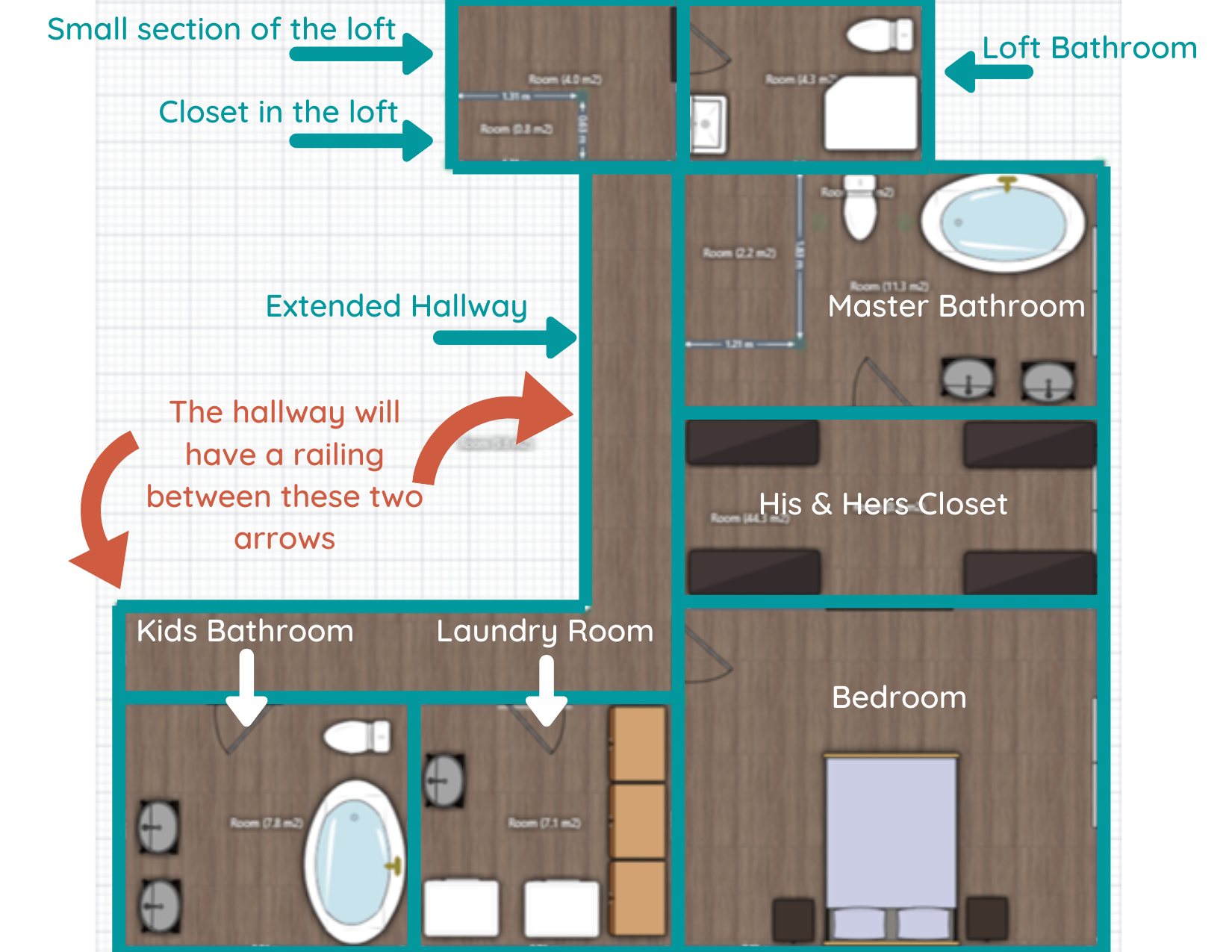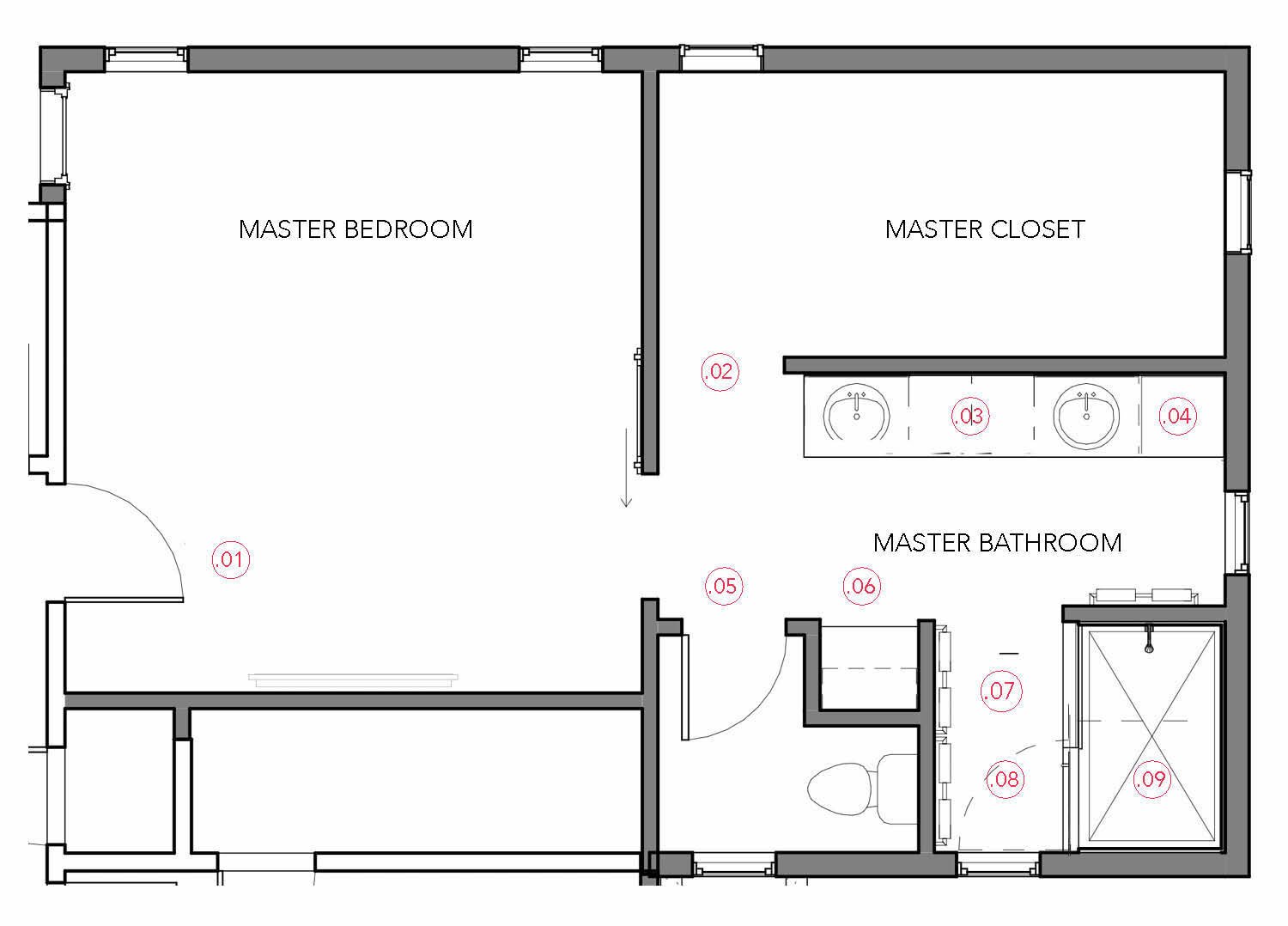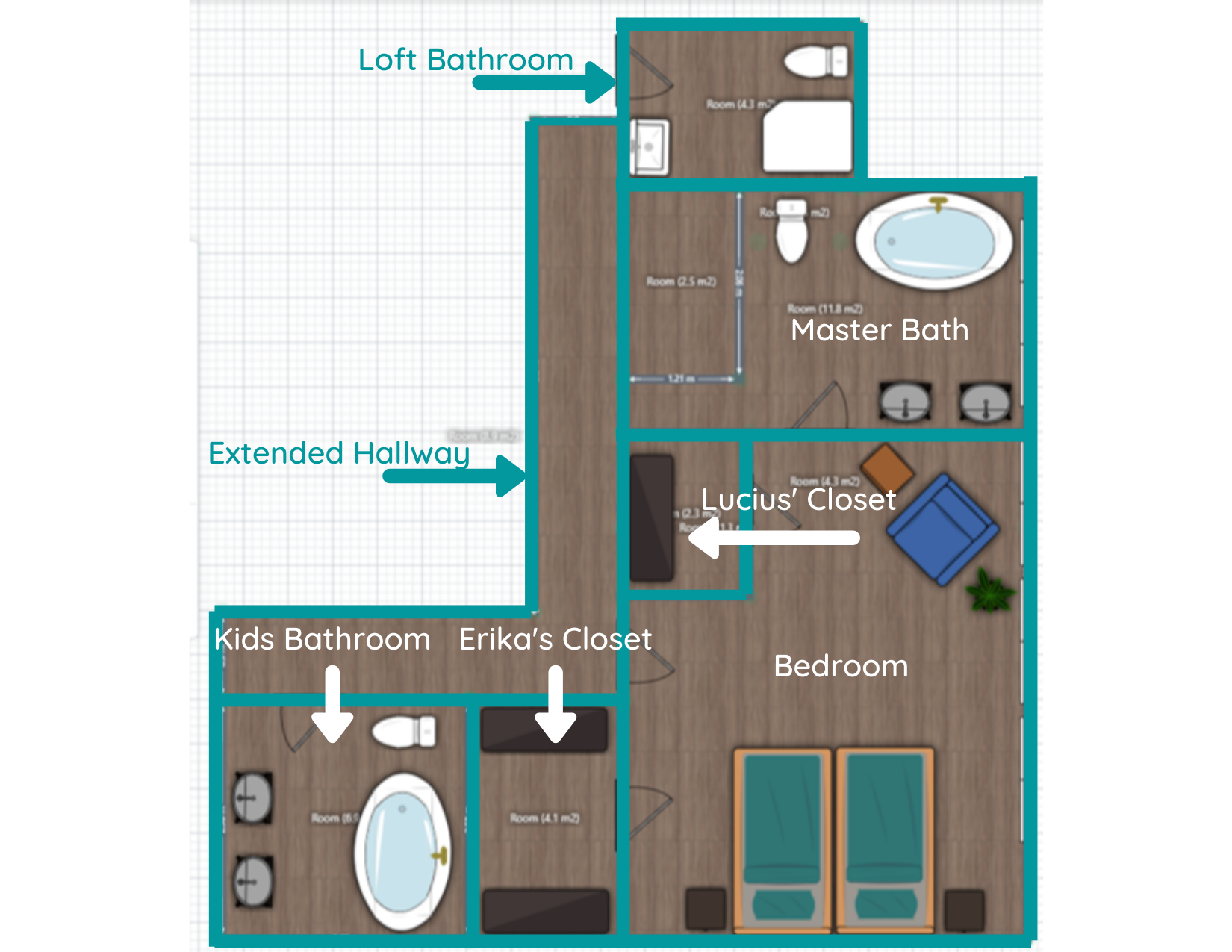Master Bedroom and Bath Floor Plan Essentials

A well-designed master bedroom and bath floor plan is more than just a collection of rooms; it’s a sanctuary where you can rest, rejuvenate, and find peace. A thoughtfully planned space promotes harmony and practicality, creating an environment that supports your well-being.
Functionality and Flow
The master bedroom and bath should seamlessly flow together, creating a cohesive and functional space. The arrangement of furniture and fixtures should facilitate ease of movement and access, while also promoting a sense of calm and order.
“The layout should encourage a natural progression, from the bedroom’s restful atmosphere to the bathroom’s invigorating experience.”
Aesthetics and Harmony, Master bedroom and bath floor plans
The design of the master bedroom and bath should reflect your personal style and preferences, creating a space that is both visually appealing and emotionally resonant. Color palettes, materials, and textures should be carefully chosen to create a harmonious and cohesive atmosphere.
“The overall aesthetic should be a reflection of your unique personality and create a sense of peace and tranquility.”
Optimizing Space Utilization
Maximizing space utilization is crucial, especially in smaller master suites. Incorporating built-in storage solutions, such as closets, drawers, and shelves, can help minimize clutter and create a sense of spaciousness.
“Every inch of space should be utilized effectively, promoting a sense of order and maximizing the functionality of the suite.”
- Storage Solutions: Custom-designed closets and built-in shelving maximize vertical space and provide dedicated storage for clothing, accessories, and other belongings.
- Natural Light: Large windows and skylights allow natural light to flood the space, creating a bright and airy atmosphere. Consider placement of windows and skylights to maximize natural light while maintaining privacy.
- Distinct Zones: Creating distinct zones within the suite can enhance functionality and create a sense of separation. For example, a separate dressing area within the bedroom can provide a private space for getting ready.
Layout Considerations for Master Bedroom and Bath Floor Plans

Creating a master bedroom and bath layout that reflects your personal style and enhances your well-being requires careful consideration. The arrangement of these spaces directly impacts functionality, privacy, and overall flow within your home. Let’s explore different layout configurations, their advantages, and disadvantages, and provide examples to inspire your design journey.
En Suite Bathrooms
En suite bathrooms, directly accessible from the master bedroom, offer a sense of privacy and convenience. This layout is particularly appealing for those who value a serene and intimate space for personal rituals.
- Advantages: En suite bathrooms eliminate the need to walk through shared hallways to reach the bathroom, creating a sense of sanctuary within the master bedroom. This layout also allows for a more seamless flow of movement between the two spaces, particularly beneficial for individuals with mobility limitations.
- Disadvantages: The primary disadvantage of en suite bathrooms is the potential for noise to travel from the bathroom to the bedroom. This can be mitigated by careful soundproofing measures, such as using thicker walls, sound-absorbing materials, and a well-designed door.
Walk-in Closets
Walk-in closets provide ample storage space and enhance the functionality of the master bedroom. They allow for easy access to clothing and accessories, promoting a sense of organization and calm.
- Advantages: Walk-in closets offer a dedicated space for storing clothing, shoes, and accessories, minimizing clutter in the bedroom. They also provide a convenient space for getting dressed and ready for the day.
- Disadvantages: The primary disadvantage of walk-in closets is the space they require. Smaller bedrooms may not have enough room to accommodate a walk-in closet, and it’s important to consider the overall layout to ensure a balanced flow within the master bedroom.
Separate Dressing Areas
A separate dressing area, often positioned between the bedroom and the bathroom, provides a dedicated space for getting ready. This layout combines the benefits of a walk-in closet with the privacy of a separate space.
- Advantages: Separate dressing areas offer a more organized approach to getting ready, allowing for a dedicated space for dressing, applying makeup, and styling hair. They also provide a buffer between the bedroom and bathroom, minimizing noise and visual distractions.
- Disadvantages: The primary disadvantage of separate dressing areas is the space they require. They are best suited for larger master bedrooms, where the layout can accommodate this additional feature without compromising the overall flow.
Design Inspiration for Master Bedroom and Bath Floor Plans

Inspiration is a powerful force in design, and your master bedroom and bath are no exception. Whether you’re drawn to the sleek lines of modernism, the timeless elegance of traditional style, the minimalist appeal of contemporary design, or the rustic charm of farmhouse aesthetics, each style offers a unique opportunity to create a sanctuary that reflects your personal taste and fosters a sense of tranquility.
Modern Master Bedroom and Bath Floor Plans
Modern design prioritizes clean lines, functionality, and a minimalist approach. The use of natural materials like wood, stone, and metal is common, often combined with bold geometric shapes and a neutral color palette.
- Open Floor Plans: Modern master bedrooms often feature open floor plans that seamlessly connect the bedroom, bathroom, and even a walk-in closet, creating a sense of spaciousness and flow.
- Minimalist Furniture: Furniture pieces are typically sleek and streamlined, with a focus on functionality. Think platform beds, floating nightstands, and minimalist dressers.
- Geometric Shapes: Geometric shapes are often incorporated into the design, from the layout of the room to the furniture and lighting fixtures. This creates a sense of order and visual interest.
- Statement Lighting: Modern lighting fixtures often serve as a focal point, adding a touch of drama and sophistication. Think sleek pendant lights, linear chandeliers, or architectural floor lamps.
- Neutral Color Palette: Modern design often utilizes a neutral color palette, such as white, gray, black, and beige, allowing pops of color from artwork or accent pieces to stand out.
Traditional Master Bedroom and Bath Floor Plans
Traditional design embraces classic elements, timeless elegance, and a sense of history. It often features intricate details, ornate moldings, and a warm, inviting atmosphere.
- Symmetry and Balance: Traditional master bedrooms often feature a symmetrical layout, with the bed placed centrally and flanked by nightstands. This creates a sense of order and balance.
- Rich Materials: Traditional design often utilizes rich materials such as wood, marble, and velvet, creating a sense of luxury and sophistication.
- Ornate Moldings: Intricate moldings, crown molding, and wainscoting are common features in traditional master bedrooms, adding a touch of elegance and detail.
- Statement Furniture: Traditional furniture pieces are often characterized by their intricate carvings, elegant lines, and luxurious fabrics. Think four-poster beds, antique dressers, and tufted ottomans.
- Warm Color Palette: Traditional design often utilizes a warm color palette, such as beige, cream, brown, and gold, creating a cozy and inviting atmosphere.
Contemporary Master Bedroom and Bath Floor Plans
Contemporary design is characterized by a focus on simplicity, functionality, and a clean, minimalist aesthetic. It often features a neutral color palette, natural materials, and a focus on light and space.
- Open and Airy: Contemporary master bedrooms often feature open floor plans that create a sense of spaciousness and light. Large windows and skylights are common features.
- Minimalist Furniture: Furniture pieces are typically sleek and streamlined, with a focus on functionality. Think platform beds, low-profile dressers, and minimalist chairs.
- Natural Materials: Contemporary design often utilizes natural materials such as wood, stone, and metal, creating a sense of warmth and authenticity.
- Neutral Color Palette: Contemporary design often utilizes a neutral color palette, such as white, gray, black, and beige, allowing pops of color from artwork or accent pieces to stand out.
- Statement Lighting: Contemporary lighting fixtures often serve as a focal point, adding a touch of drama and sophistication. Think sleek pendant lights, linear chandeliers, or architectural floor lamps.
Farmhouse Master Bedroom and Bath Floor Plans
Farmhouse design embraces rustic charm, natural elements, and a sense of warmth and comfort. It often features distressed wood, exposed beams, and a cozy, inviting atmosphere.
- Rustic Charm: Farmhouse master bedrooms often feature exposed beams, reclaimed wood, and distressed furniture, creating a sense of rustic charm and authenticity.
- Natural Materials: Natural materials such as wood, stone, and linen are common in farmhouse design, creating a warm and inviting atmosphere.
- Neutral Color Palette: Farmhouse design often utilizes a neutral color palette, such as white, cream, gray, and brown, creating a backdrop for pops of color from textiles and artwork.
- Cozy and Inviting: Farmhouse master bedrooms are often designed to be cozy and inviting, with comfortable seating areas, soft lighting, and plenty of natural light.
- Statement Furniture: Farmhouse furniture pieces often feature distressed finishes, simple lines, and natural materials. Think wooden beds, vintage nightstands, and woven rugs.
